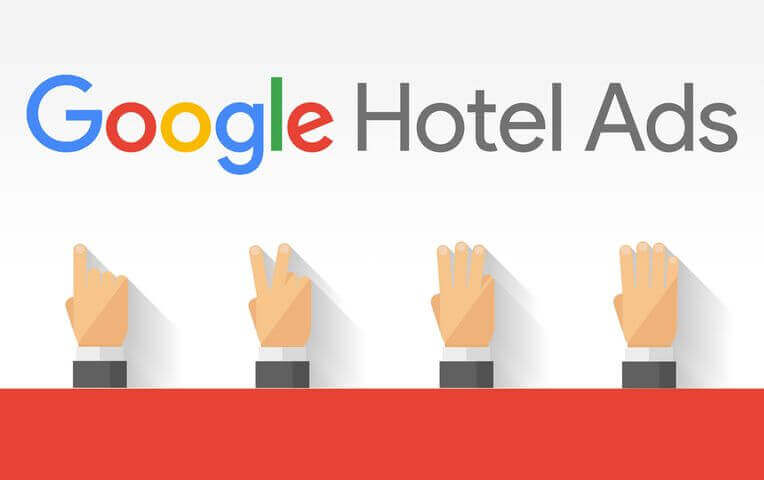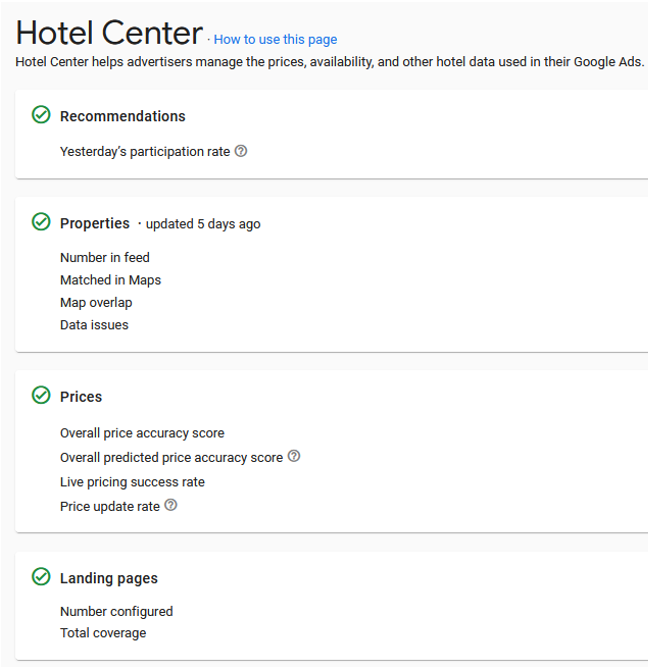Our data shows that Google Hotel Ads is the fastest growing metasearch engine with 64% of the meta market in 2019.
NB: This is an article from mirai
That number will grow even more in 2020 as hotels, due to the covid-19 crisis and the high cancelation rates, halted all CPC campaigns and only left those running under commission models like the Google commission per stay (CPS), formerly known as GHACP.
Google Hotel Ads is also gaining market share from traditional Ads, according to d-Edge, as Google gives more visibility to the Hotel Ads module in search results or the launch of Travel Search on Google.com.
As a hotelier, participating in Google Hotel Ads should not be a question anymore (we had a similar debate in the past about doing Ads with your brand). If OTAs were not bidding on your hotel, there would be nothing to discuss. Unfortunately, that is not the case. The good news is that Google makes it quite easy to participate allowing different bidding models to minimize your risk and control the return of your spend.
Google Hotel Ads is an open marketplace and competitive advantage can be gained through technology and strategy. Hotel Ads has many features for example that many integration partners neglect, making hotels lose great opportunities to boost visibility of their direct channel and increase performance.
We walk through 15 best practices that you should demand your Hotel Ads integration partner to provide. The more you have or do, the better your performance will be.
1- Show all room types and rates; not only the cheapest one.
With more options to book, you will increase the possibility to upsell better rooms and packages. You will also occupy more “space on the screen” increasing your CTR, or click-through-rate. Google’s Room Bundles and Rate features are what you need. Room bundles “let you define multiple room types for a single property, or combine an itinerary of a room with rate features”.
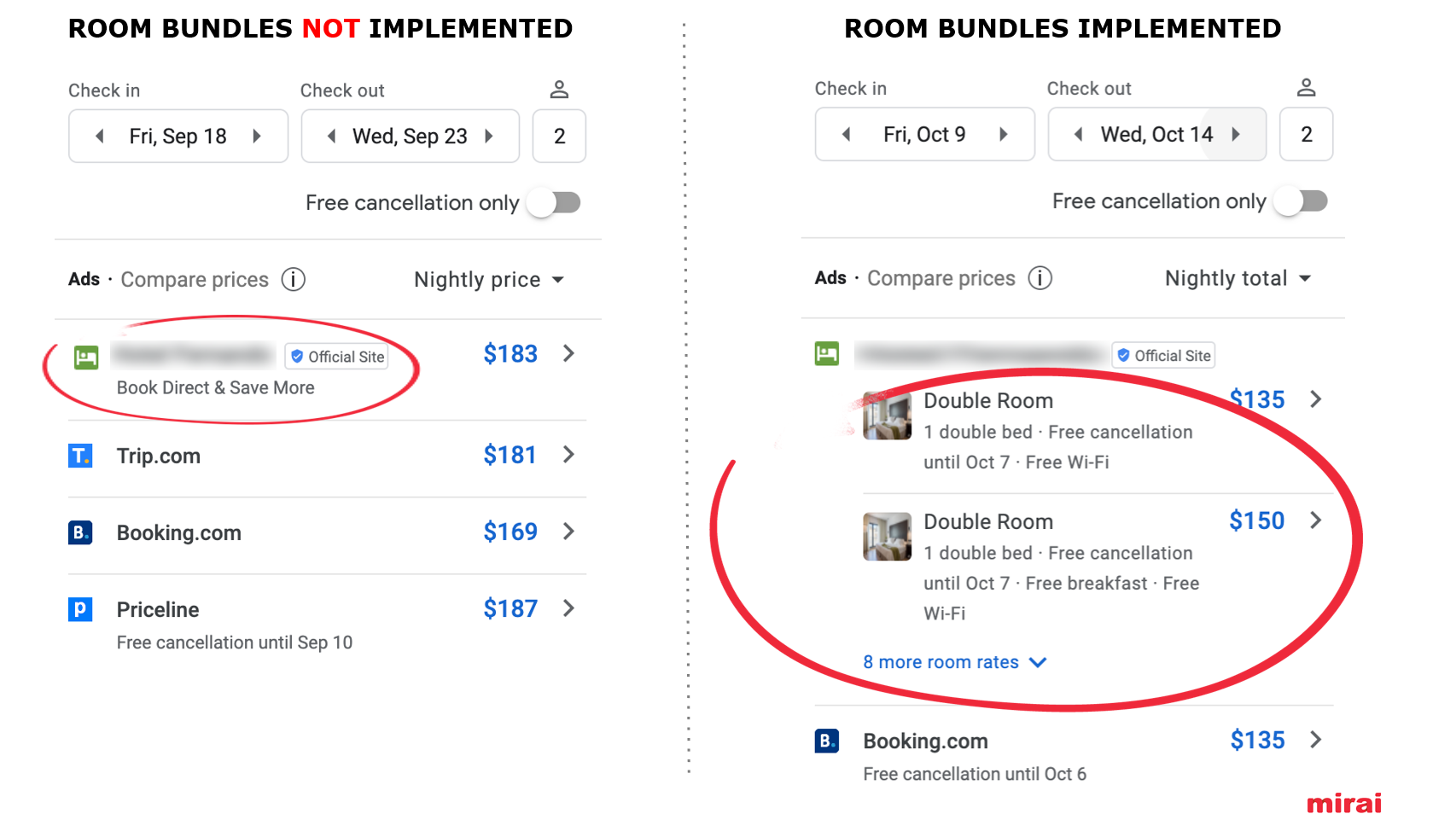
2- Display all your occupancies ready and get 30% more visibility.
Starting 2018, users can choose the occupancy when searching in Google Hotel Ads. If you are only showing prices for the default 2 people, you will be out of searches for 3-4 people (which are very interesting given the higher ADR), giving all the visibility to OTAs for free. You will also look more expensive than other channels when users search for 1 person (as you offer them your rate for 2 people).
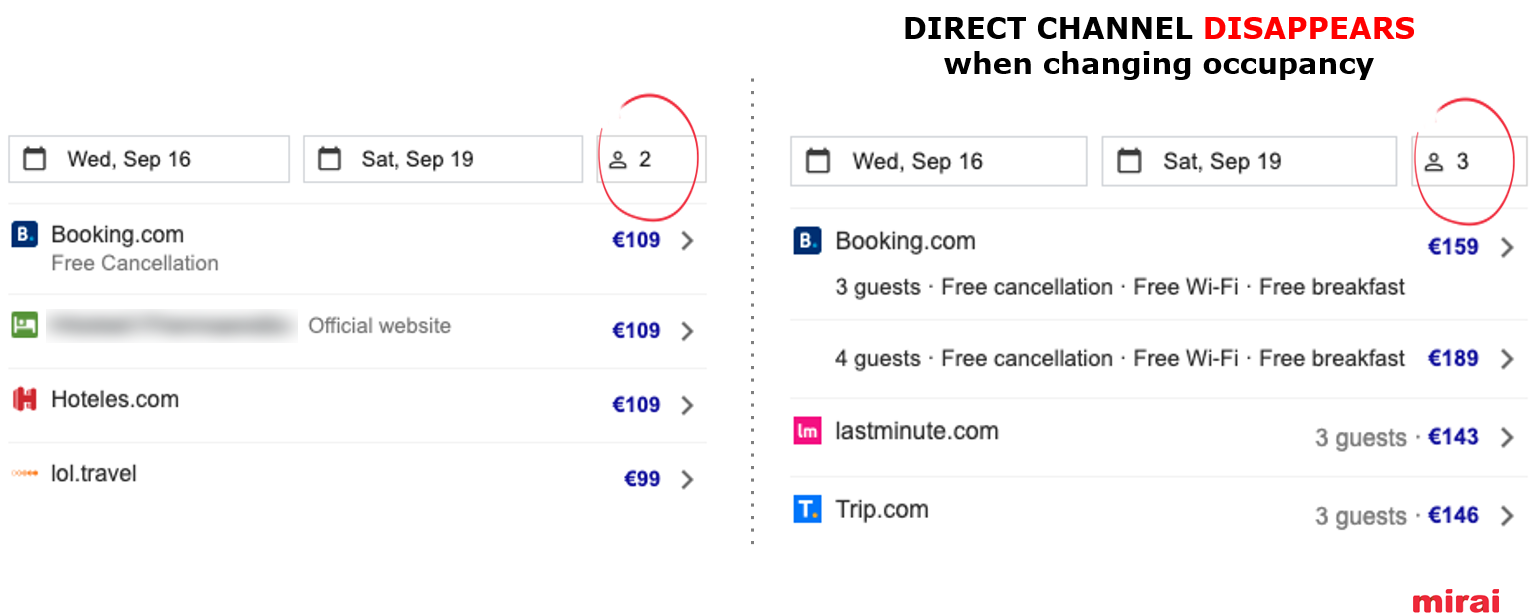
This feature is highly relevant as our numbers show that 29% of the booked roomnights coming from Google Hotel Ads are occupancies different than 2 (16% for 1 person, 7% for 3 people and 6% for 4 people or more).
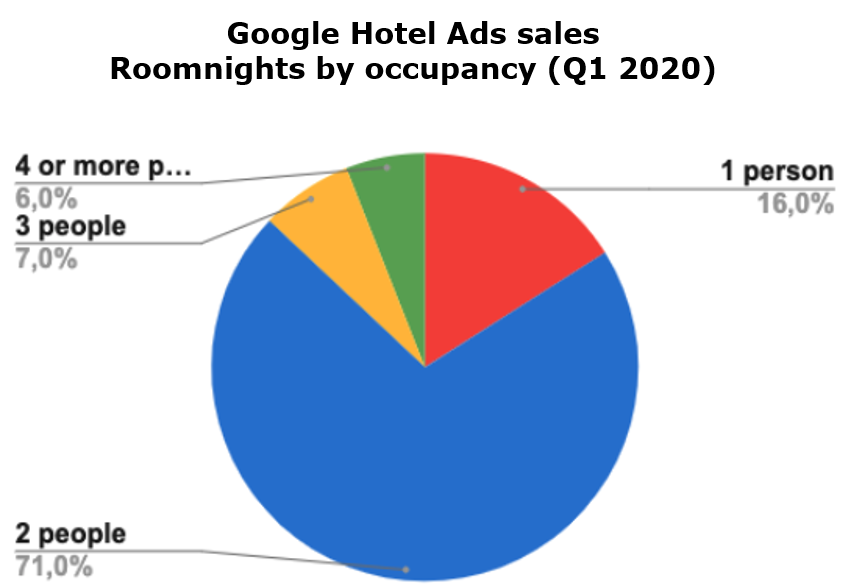
3- Display pictures of your rooms.
Starting early 2020, Google allowed your direct channel to include pictures. Your rooms look much brighter and more attractive to a traveler. Google Room Bundles is again the way.
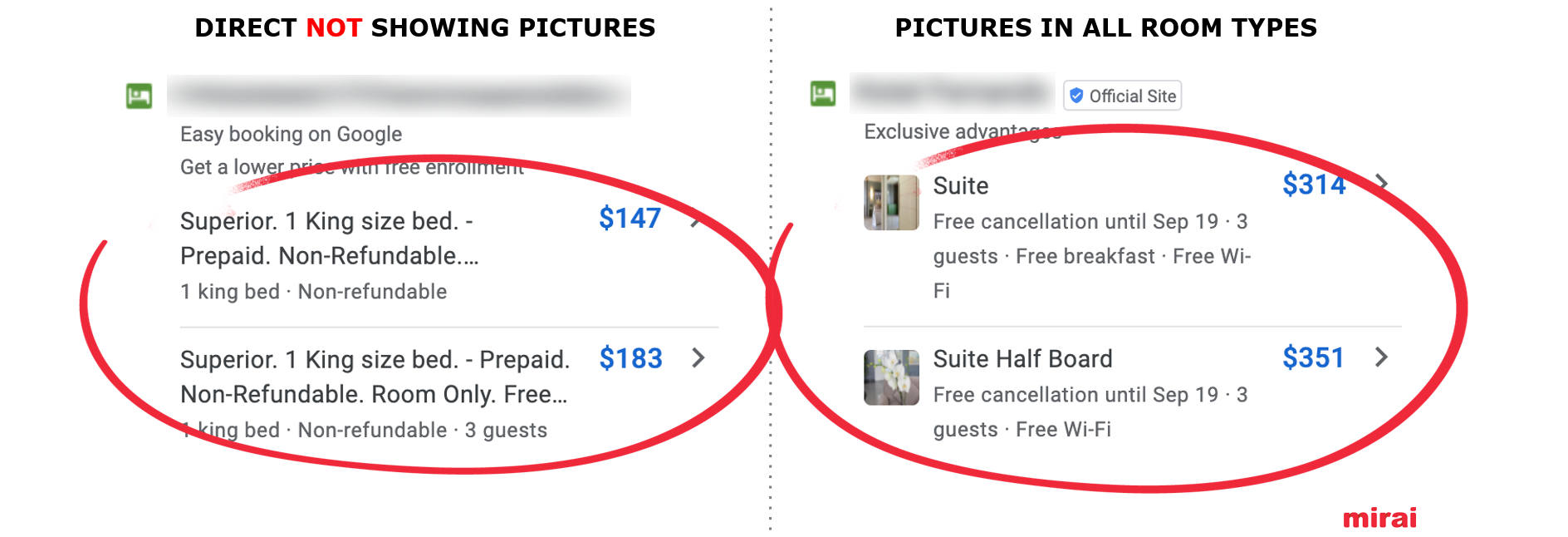
4- Customize your logo and callouts.
If you have a strong brand, you should personalize your logo. It reinforces the message that your clients are dealing with the direct channel and not an OTA. In the case of independent hotels where the brand is unknown, it might be better to use the classical green logo Google uses for official sites.

You should also personalize your entries with specific callouts highlighting why booking direct is best.

5- Communicate your room and rate attributes; not only the price is important.
Google allows you to highlight the most important attributes of your rate and rooms. This additional information helps your clients make better decisions and manage expectations, resulting in higher qualified traffic and conversion rates.
The most important attributes are the cancellation policy, meal plans and services such as “free wi-fi” and “free parking”.

6- Make sure your prices remain when the “free cancellation” filter is applied.
Earlier this year, Google released a new filter to only show “free cancellation” rates. Covid-19 crisis has very much impacted non-refundable rates from 35% share in 2019 to around 10% in the last 4 months. Having the option to cancel a booking is a must for many travelers, so it is very important that your prices are still shown when this filter is applied.
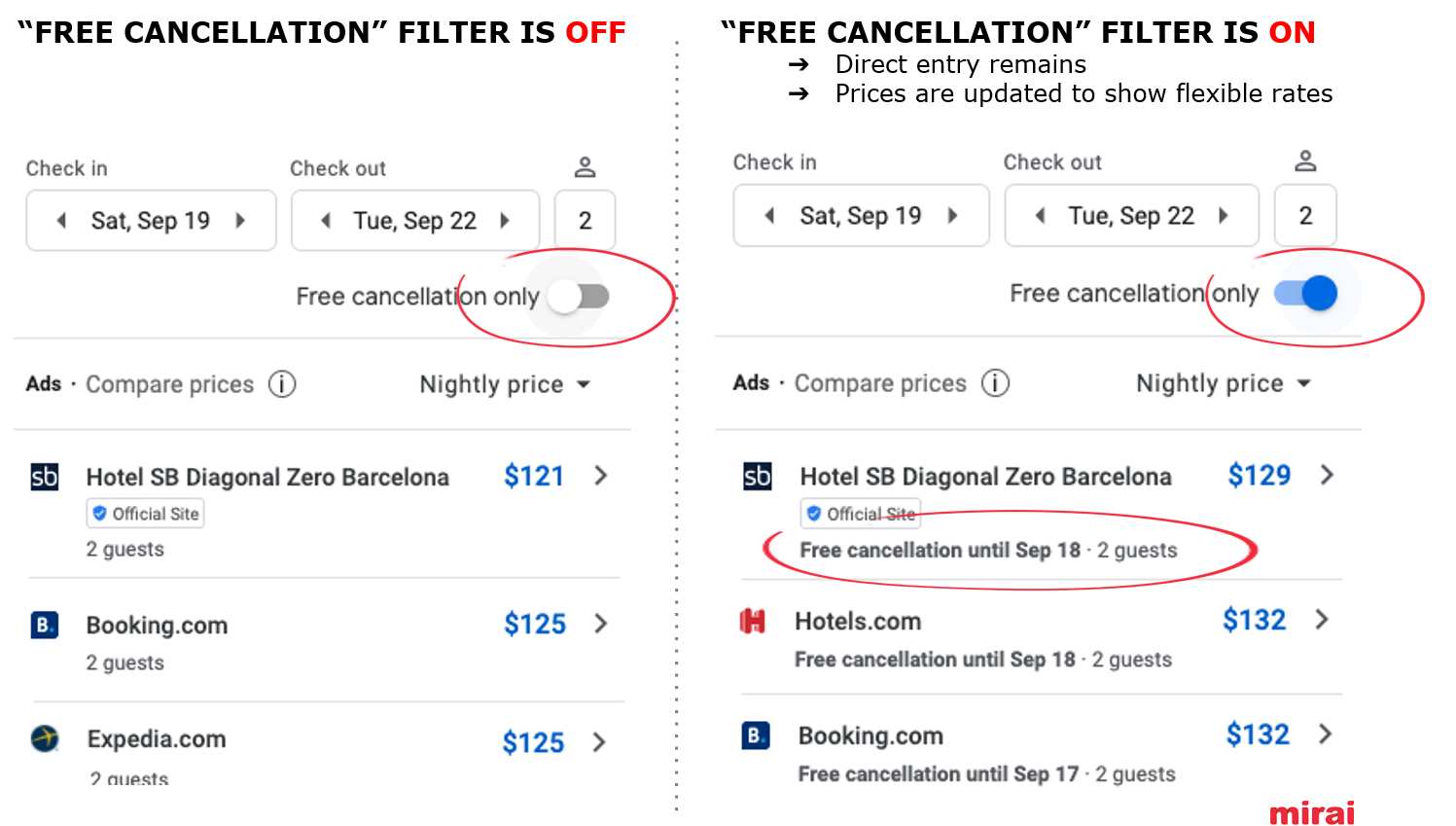
7- Adapt your tax information to each Google’s point of sale (POS).
Countries such as the US are used to showing prices without taxes. On the other hand, in Europe the common practice is to show the final price including taxes (VAT and local taxes and fees). If wrongly done, your prices might look more expensive negatively impacting your CTR (click-through-rate), conversion rates and eventually your total sales.
You can see that happening in the following hotel that has a better rate when booking direct, but looks more expensive in the US as it is showing its prices with taxes when OTAs are not. You can test it yourself searching in Hotel Ads as if you were in a different country.
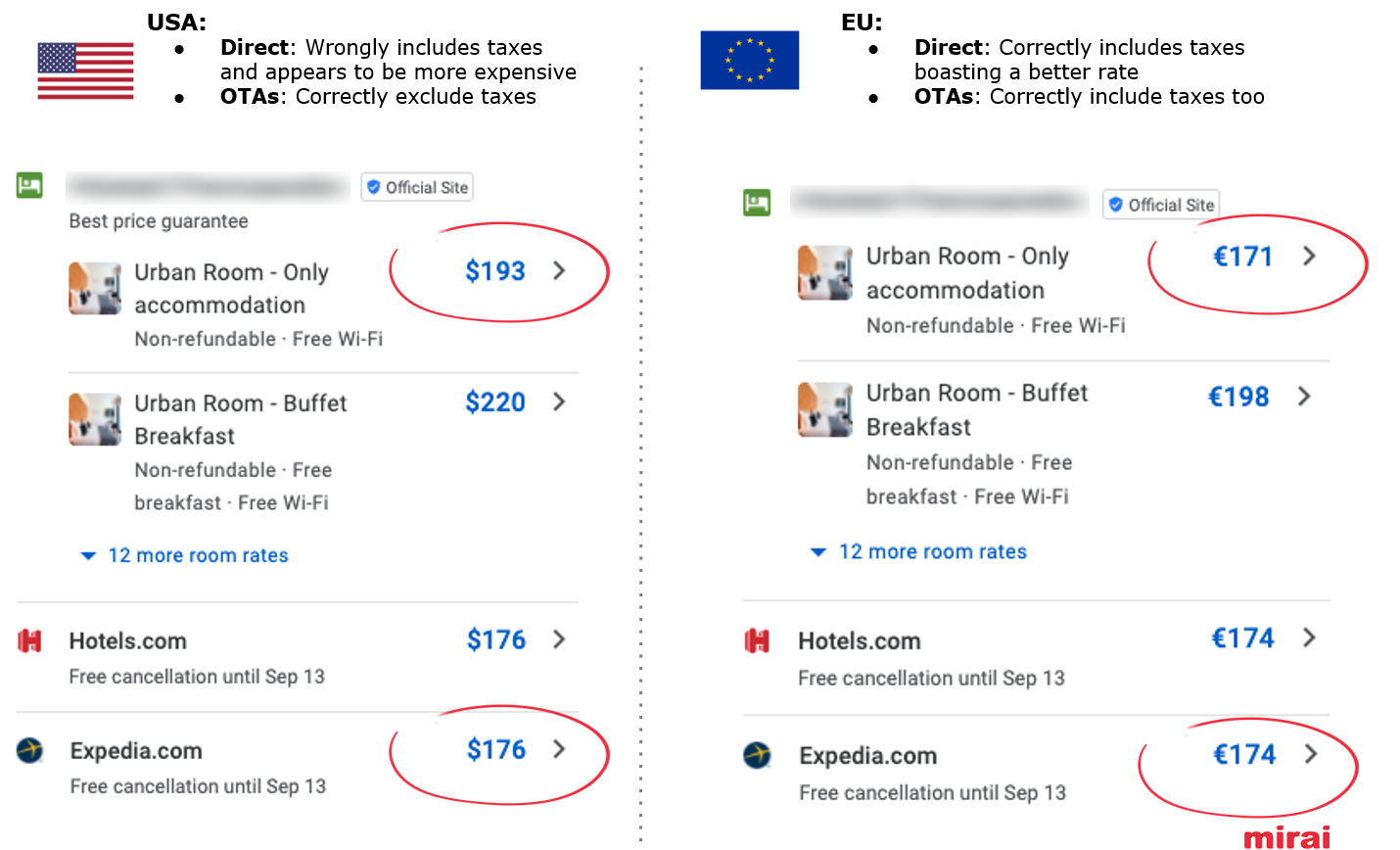
8- Keep consistency of currency and taxes on your booking engine.
For international travelers, it is highly inconvenient to land on a hotel website where the booking engine shows a different currency and taxes that they had previously seen in Hotel Ads. This issue is one the major challenges hoteliers face on their direct channel.
Conversion rate grows when the landing page is consistent with both the currency and taxes displayed in Hotel Ads. Again, to try it yourself you can use this short guide to use Hotel Ads as if you were in a different country.
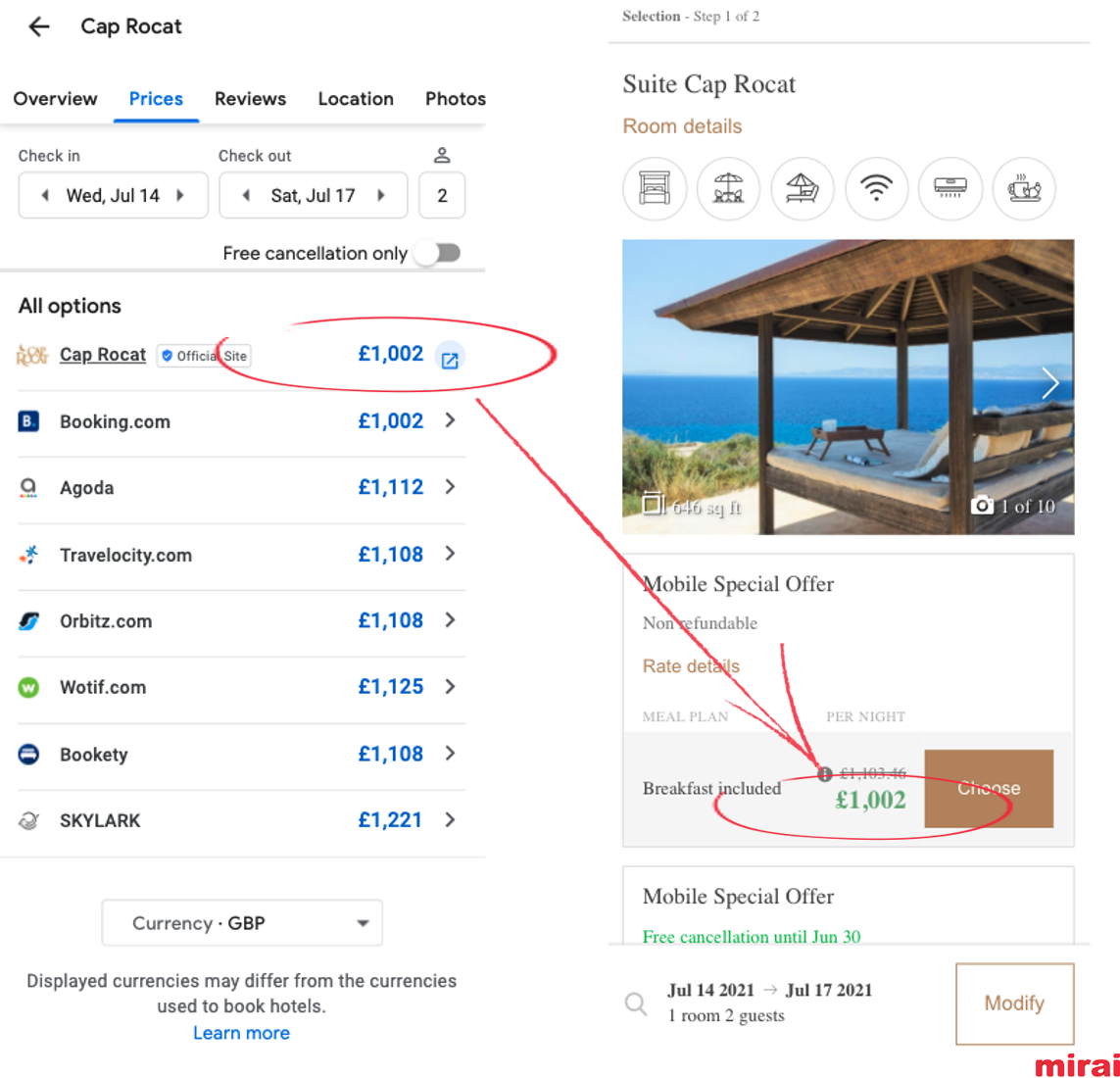
9- Display exclusive rates by device and country.
As part of your strategy to compete with OTAs, you may consider offering better prices when booking from mobile devices or from some specific countries where your brand is not popular and OTAs are very strong. If this is your case, something in Mirai we highly recommend, you would want to correctly show these rates in Google Hotel Ads too. In Google’s vocabulary, this is called conditional rates (formerly known as fenced rates). These rates let you differentiate the prices you show by device and user country.
Having a better price in Hotel Ads highly impacts the traffic to your website, increasing CTR (click-through-rate) and conversion rates.
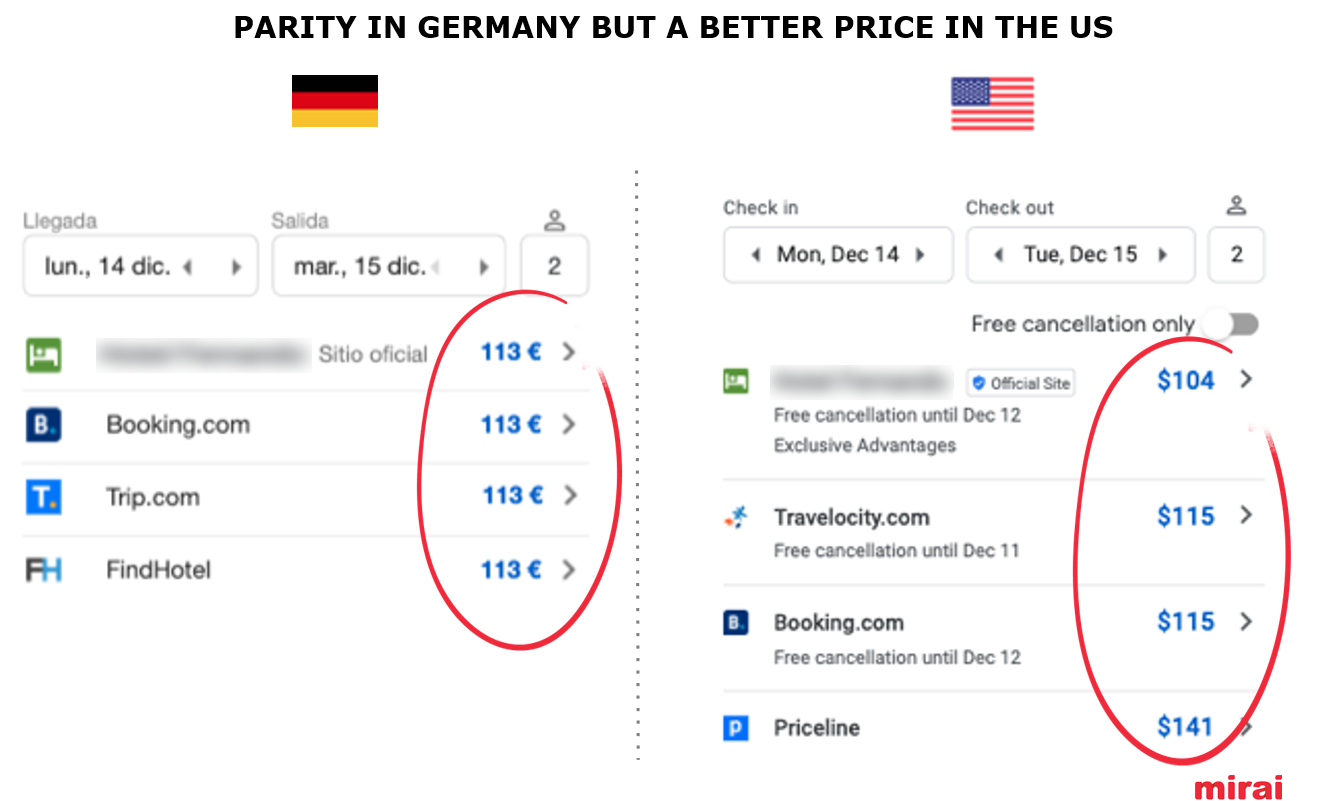
10- Lean on Book on Google when needed.
Starting 2017, Google launched Book on Google (BoG), and has been adding new markets until today. For hotels, BoG is a good tool to optimize your conversion in source markets where your brand is not known or where they use long tail languages that you do not cover in your direct channel.
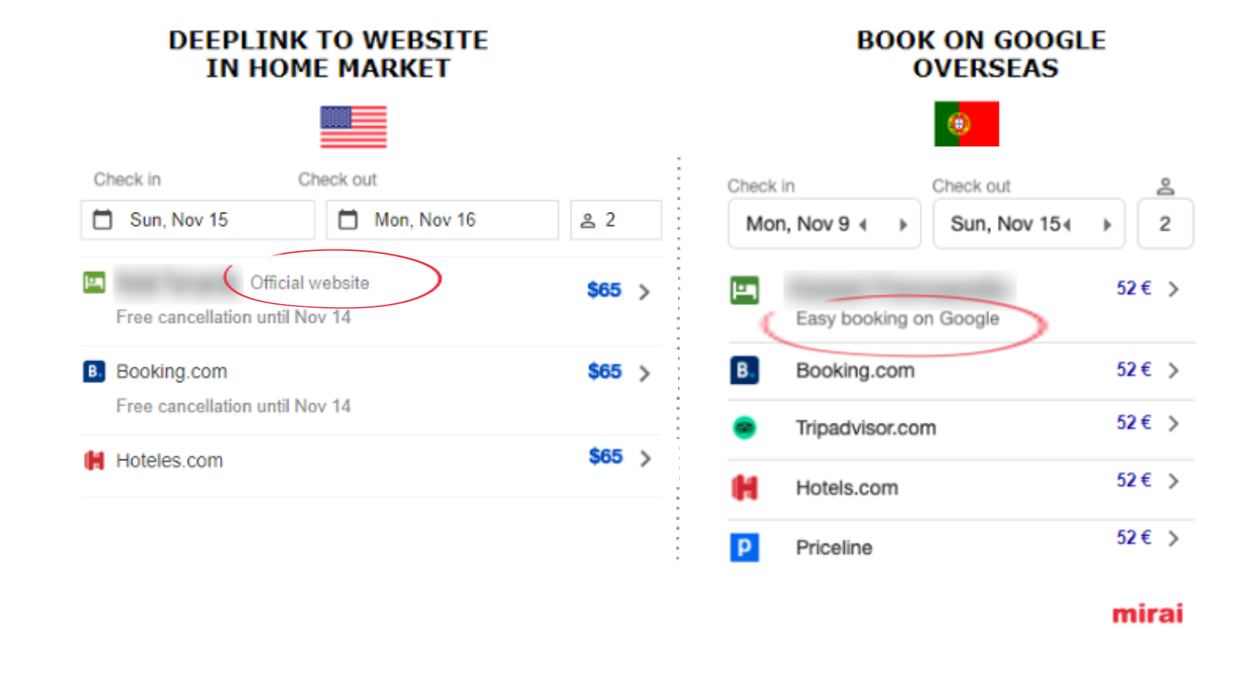
11- Choose the best bidding model.
Google allows three bidding models:
- CPC or cost per click.
- Commission per conversion, formerly known as CPA.
- Commission per stay or CPS, formerly known as Google Hotel Ads Commission Program (GHACP)
Each model offers its pros and cons, but the issue here is whether you have the three options available to use or not. For instance, “commission per stay” was a great way to be in Hotel Ads during the covid-19 crisis. CPC might be better when you want to perform a strong campaign in Black Friday or other hot dates. Or you can even combine to bidding models at the same time (8% commission per conversion + CPC for specific campaigns)
Be sure to have the three options available in your toolset so you can choose one or another according to your needs.
12- Personalize bids to your audiences to maximize ROI.
Audiences is one of the most advanced features in Google Hotel Ads to play with. However, the key to make it work is having enough volume, and that is not easy. Chains are better poised to reach that volume that can make a difference. Nevertheless, independent hotels can slowly grow their audiences and create bidding strategies to target them more effectively.
Segmenting your clients in different audiences lets you bid more aggressively to get those highly qualified users (for example, those who have already visited your site) and let the least qualified go to other channels as their value to you is not that high.
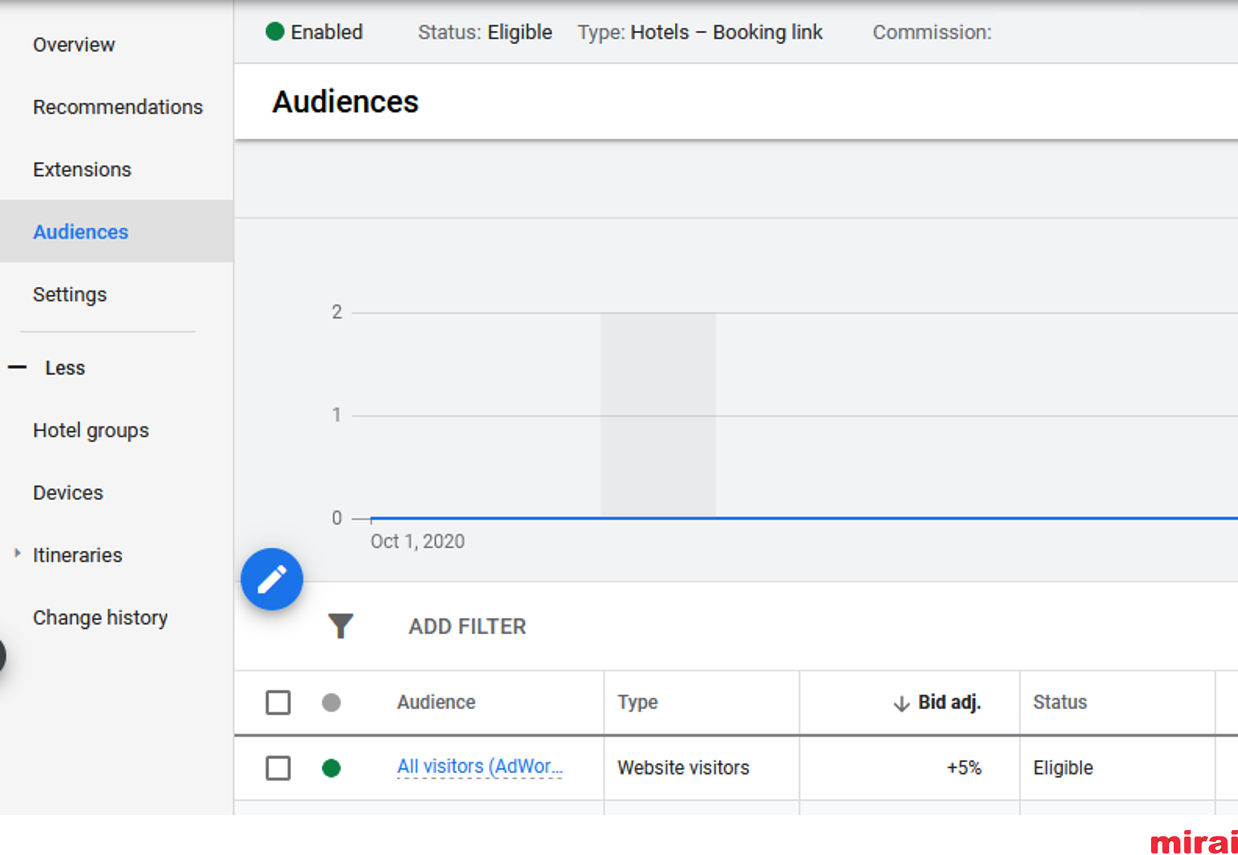
13- Monitor your performance with the right tool.
Integrating with Hotel Ads and starting to bid are just the first steps. Running campaigns and monitoring performance are the second and critical recurring steps. Traditionally, Google Hotel Ads campaigns ran exclusively under the Hotel Center for integration partners. After the merger between Hotel Ads and Ads, you can see results and optimize your bids within your Google Ads dashboard (not Google 360º thus far). To do so, you need to link your hotels in Hotel Center (the console integration partners use) with your Google Ads.
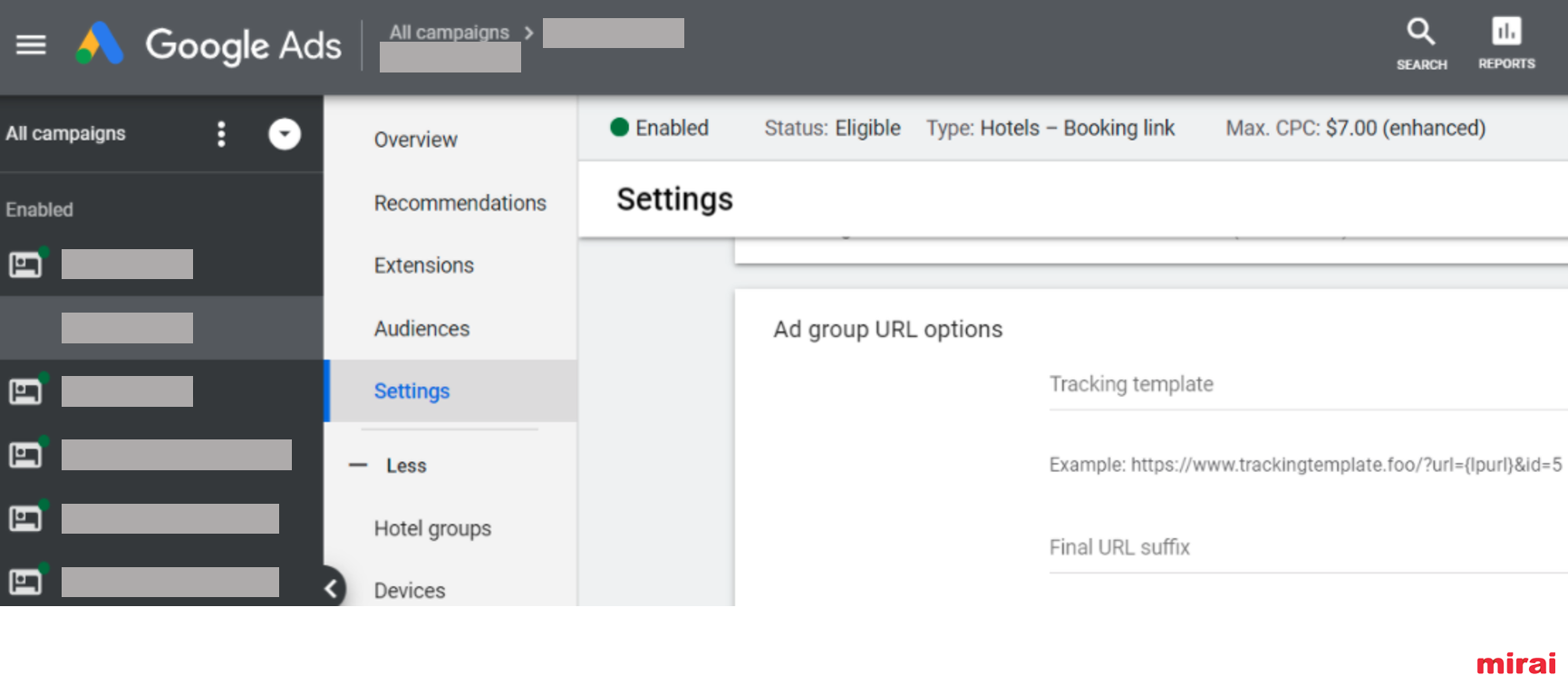
Some companies offer their own metasearch panel to track down performance and segment results by device, market and many other variables. These tools are very useful and provide much more visibility and information on top of what Google Ads offers. They also help you better understand your performance and make more precise decisions. At Mirai, we are very proud of our Mirai Metasearch dashboard released a few months ago.
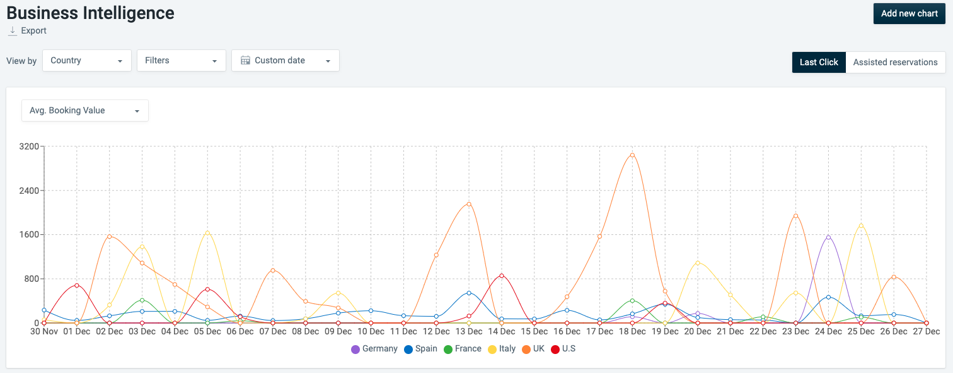
14- Keep your technical integration always healthy.
Google is always looking for excellence. This means that it is not just about what the user sees, what it is behind the scenes also matters. That is why it’s very important to take care of your technical integration health. There are a few variables we suggest you to keep in mind to guarantee an optimal technical integration:
- Make sure you have an excellent price accuracy level. It will improve your quality score and impression share.
- Respond to availability and price requests as fast as possible, especially for live pricing queries.
- Clean and fix any technical errors and warnings Google reports you.
- Landing page matches to assure you’re not missing any opportunity.
You will be able to follow up and monitor all these important variables through the Hotel Center, where you will see at any time the status of each one.
15- Customize your tracking “utm” labels to properly track all data in Google Analytics and be consistent with other sources of traffic.
You may need to add custom variables in the deeplink when redirecting Hotel Ads traffic to their websites, which allows them to better track performance in Google Analytics and keep consistency with other sources of traffic. That may imply having new variables or customizing the popular utm_source, utm_medim and utm_campaign labels. Just a few integrations with Hotel Ads allow you to do this.
https://www.yourdomain.com/?……….&tt_meta=gha&etf-name=googlehpa-hotelname_US&utm_campaign=CPS_desktop&utm_medium=cps&utm_source=custom-content&utm_content=US&custom_variable1=xyz&custom_variable2=xyz
Conclusion
As you can see, while GHA is very powerful, it is also very complex – and the devil is in the details. Many hotels are indeed integrated in Hotel Ads, but just with the basics and are losing great opportunities on the way.
Check your current integration to assess in what position you are. If you are not participating in Hotel Ads, this list of features will help you find the best solution. At Mirai, we are very proud of our integration with Google Hotel Ads and are committed to keeping it constantly fine tuned.

